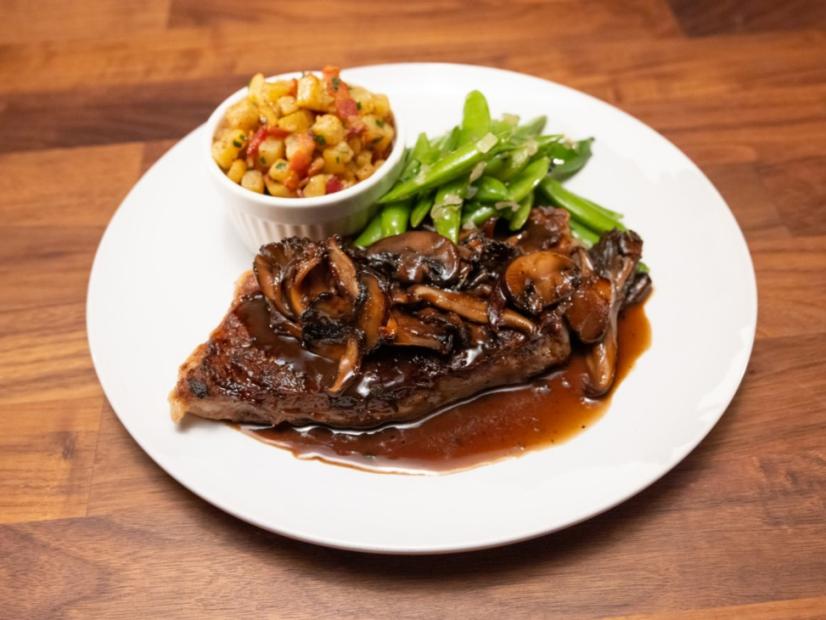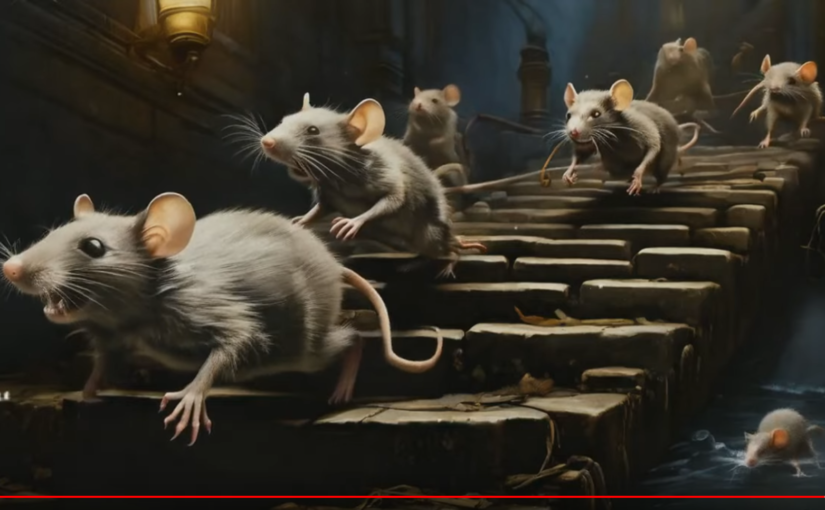Most animals communicate by telepathy. Us humans, are so reliant on the spoken word and voice / written communication that we think that there isn’t other forms of communication. This is ignorance, and arrogance.
When cats sit in a circle and sit up with their eyes half closed, they are communicating to the other cats. Some of which is telepathy. Some is by odor. Some is by micro-vibrations.
And there are some other kinds of communication methods that we have no clue of, but the cats do.
Men, sorry guys, but we are rather dumb; stupid in our ability to communicate. Women are much better, though sometimes the feigned pretend that they don’t know what is going on is irritating.
If we could embrace this ability to communicate with other species, an entire world would crack open and astound us.
Just sayin’.
Today…
NO EXCUSES, GET IT DONE
Will it be possible for India and China to resolve their border disputes while PM Modi is in power?
The problem is that this issue has gone beyond Modi and Xi today
The Galwan conflict was a spontaneous eruption that ended in 21–25 days and neither Xi nor Modi made any of the decisions nor did their ministers
Yet India was brutally humiliated
The fact is China found itself in possession of a large parcel of territory and immediately fortified it and as usual built a boatload of Infrastructure within a matter of months and claimed it as their own
Xi didn’t have the slightest idea of what would happen in April and by the time he realized what was happening – his Army had informed him that they had taken a large piece of Indian territory and killed 20 soldiers
He had two choices :-
First he could immediately order his army to retreat, hand over the Indian Territory plus patrolling territory back to the Indian Army, apologized to Modi and gone back to the Pre April 2020 border
If he had done that, the PLA would never have reposed the slightest confidence in him again and he would lose one of the three critical legs of the Chinese Tripod – the PLA
Second, he could declare victory, reward the heroes and build infrastructure and add the territory to Chinese territory and brazen it out
If he did that, he would gain huge support from the Army and that would help him greatly in weeding out corrupt generals and preparing for War against the US when it came
Sure he loses TikTok in India & a few minor bummers but that’s no big deal for Xi or China
No guessing which choice he made
Now Modi is in a deep fix
If he accedes the territory lost in April 2020, the Indian Army will lose terrible face
They will never forgive Modi nor repose confidence in Modi anymore
Already it is clear that Galwan was a DEFEAT for the Indian Army and to make a move to resolve the dispute without Galwan would be to accept this openly
So Modi is in a Quandary too
The only way this can be resolved is if the Indian Army has fantastic success in some other battle arena and thus gains enough reputation back to push Galwan away from memories
Or unless China retreats from Galwan which is possible only if :-
- India promises neutrality in any South China Conflict away from QUAD protocol
- India allows a Silk Route through Kashmir
- India promises a free maritime zone through the Indian Ocean
Right now China has no burning need to placate India
India has far more need for China than China has for India
The equation is heavily lopsided in favor of China for Xi to put in too much effort while Modi loses face in almost every scenario
India will make the first move eventually, it’s just a question of when the timing is perfect
getting fired in 28 seconds or less – REACTION
What conversations have you overheard in a language they assumed you don’t know?
I didn’t really know the language, but my friend did. I was at lunch, and walking to my table I tripped and fell. I got up a little embarrassed and sat down with my friend. These two guys at the table behind me were speaking very loudly in Russian. My friend, who is from Kazakhstan, leaned in close and said “They’re talking about you.” I asked what they were saying, and it was along the lines of “Is he so stupid he can’t even walk straight? This is why I hate Los Angeles, people are always drunk or outright mentally retarded.” He told me to get up to go to the bathroom, and when he calls back for me, he’ll speak a sentence in Russian, I was to look at him curiously while he said it and then respond very loudly with a short phrase he gave me. Then he’d speak again, and I was supposed be very over the top acting as if what he was saying was super obvious.
I got up, and as I walked past their table he called after me very loudly, and as he told me later, we had this conversation in Russian:
“You know what I hate? People who are so stupid, they assume that no one else can understand them if they speak a different language in America.”
“I know right!”
“This is why I hate Los Angeles. People are so shallow and self important, they have to come to Chili’s to talk shit about random people they feel they’re better than.”
The two men looked horrified, and had awkward conversations about food and weather in English before they left.
What about NATO’s warning to China?
NATO is losing the Ukraine war & thus blaming it on China for helping Russia.
China has been doing commercial business with Russia, regardless if there is Ukraine war or not.
India bought Russian oil, refined it & sold it to Europe. That is helping Russia too.
I dont hear USA scolding at India. Why not? Because USA needs India to create conflicts at the China-India border. USA needs India’s help to suppress China’s growth.
So, get used to whatever NATO says about China. It is nothing.
What conversations have you overheard in a language they assumed you don’t know?
I didn’t really know the language, but my friend did. I was at lunch, and walking to my table I tripped and fell. I got up a little embarrassed and sat down with my friend. These two guys at the table behind me were speaking very loudly in Russian. My friend, who is from Kazakhstan, leaned in close and said “They’re talking about you.” I asked what they were saying, and it was along the lines of “Is he so stupid he can’t even walk straight? This is why I hate Los Angeles, people are always drunk or outright mentally retarded.” He told me to get up to go to the bathroom, and when he calls back for me, he’ll speak a sentence in Russian, I was to look at him curiously while he said it and then respond very loudly with a short phrase he gave me. Then he’d speak again, and I was supposed be very over the top acting as if what he was saying was super obvious.
I got up, and as I walked past their table he called after me very loudly, and as he told me later, we had this conversation in Russian:
“You know what I hate? People who are so stupid, they assume that no one else can understand them if they speak a different language in America.”
“I know right!”
“This is why I hate Los Angeles. People are so shallow and self important, they have to come to Chili’s to talk shit about random people they feel they’re better than.”
The two men looked horrified, and had awkward conversations about food and weather in English before they left.
The War on Napping: They Won’t Let Their Husbands Sleep
Trajectory to Armageddon: The End of the West or the End of the World?
Read this as if life depended on it, because it does. Help wake up others. (The right way!)
Introduction
Today, I want to discuss some rather depressing issues. I have had them on my list for some time, and now I decided to write about them. The topic is essentially what is currently at stake in Ukraine for all parties involved.
And I’m certainly going to touch upon several topics which might be very concerning, depressing, and certainly – unpleasant.
However, we should all be aware of these things because their effects and consequences will influence our lives and, in some cases, end them.
The Stakes are High
Those who have followed my blog for some time know what is at stake. I’m going to summarize it here briefly.
For some time, there has been a window to contain the Ukraine conflict and end it there. This was the case until the Istanbul negotiations eventually failed.
Much of what we will discuss in this article will deal with the number of Russian casualties, as alluded to in the introduction. Russia suffered a horrendous number of dead soldiers within the first few weeks of the conflict, maybe up to 10,000. That’s the price of big arrows on modern battlefields with full intelligence/information/reconnaissance/artillery/drone coverage of the battlefields.
However, (up to) 10,000 dead is still a price that would have been worth paying to achieve the goals in Ukraine without going into a full-scale war. Had there been an agreement in Istanbul that would have terminated the conflict, ensured the rights of Russians in Ukraine, and kept Ukraine out of NATO and NATO out of Ukraine, one could remotely argue that “it was worth it.”
We all know what happened instead. As with all agreements that are not guaranteed with a gun on the West’s head, the West will ignore or scrap it at will. As happened with the Istanbul agreement.
What followed was the beginning of a full-scale land war in Ukraine. I classify it as a Russian civil war. Almost all the territory of the so-called “Ukraine” is Russian historic territory, including the people living there. Decades of brainwashing by “the West” transformed many people of these territories into Russia-(self)-hating zombies. Congratulations. Now, Russia is essentially fighting itself on its own territory.
If Russia wins, Russia loses. If Russia loses, Russia (obviously) also loses. How can you win against yourself? It (Western cultivated Nazism) is like cancer. It spreads everywhere until the host is dead if you don’t stop it. What Russia is currently doing, explained with an analogy, is hammering with a little hammer for weeks on its hand, until the hand is eventually smashed and falls off on its own. Does Russia win in this case? This is a rhetorical question.
But what does this have to do with what is at stake in Ukraine? It is all about demography and losses. I think we all can agree that the “Ukrainian” idea is currently being killed on the territory of the so-called “Ukraine.” What is currently being done to Ukraine on behalf of the West and executed by the traitorous leaders of this artificial entity is essentially the extermination of Ukraine’s population. There is no turning back and no relief. More about that later.
Nevertheless, the war is also a burden on Russia in terms of demographics. President Putin is doing everything he can to stimulate the birth rate in Russia. On the other hand, we have the disaster in Ukraine. Up to two million people could be processed through the war during its duration, provided it does not expand. At the same time, Russia urgently needs people to keep its industry and economy running. Lastly, children are needed to keep the population growing and the social system viable.
Since most Russian males become fathers very late in their lives, we have the following problem: Hundreds of thousands of males are going to war. According to an interview given by President Putin, Russia lost up to 80,000 people. This is horrific.
If we look at that figure not with emotions but from a national standpoint, then we can assume the following: Most of these people might not have been fathers yet when they died. This means that from a national and demographic, maybe also macroeconomic point of view, their lives and birth were in vain. If it had been women, it would have been far worse. However, the highest purpose for people from a demographic and national point of view is to have two or more children. Dying without any children is a catastrophe.
Like a giant malignancy, the West detonated a process that may go on festering for generations.—Ed.
Don’t get me wrong. I intentionally ignored emotions here to explain the rational point of view. It is important to understand that fact to understand some actions that could result from this. President Putin, in particular, is a person who reasons, and this is precisely his thinking pattern. Therefore, it is important to understand this perspective, whether you agree with it or not.
Now that I have laid some groundwork, we can conclude the following :
- If Russia loses this war, the Nazi virus/cancer would spread forcefully within Russia and destroy it. Don’t underestimate this angle. It is very much a possible scenario in case of a military defeat for Russia.
- This leads me to point two. Everyone knows Russia will not be militarily defeated, but it might be internally defeated. I think there is a certain threshold of dead Russian soldiers in this war that is tolerable to the Russian leadership. If I were forced to guess, I would say the number is around 300,000 men. But that is pure speculation.Suppose the number gets too high and the Russian leadership contains the war on Ukrainian territory with rather a soft approach. In that case, we will see riots and mass protests across Russia against the current Russian approach. I’m not talking about several hundred woke, drug-addicted zombies protesting on behalf of the CIA. I’m talking about protests that could get out of control, eventually leading to Russia’s end.
I will continue this topic later.
This is what is at stake for Russia. In other words, if Russia loses too many people in Ukraine or loses militarily, then it would be the end of the Russian Federation. The West knows this, and the gamble is that Russia will not end the world in the process, just like the Soviet Union was dismembered without taking the world down in the process.
In other words, The West hopes Russia feels some common responsibility for humankind.
Frankly, It doesn’t.
Equilibrium of Forces
There is something good in the things that are happening. A mighty counter-alliance to the West is forming. I’m not talking about BRICS. Russia, China, Iran, and North Korea are the fundamental parts of this new MILITARY alliance.
This alliance aims to ensure the members’ safety and the safety of other nations that might be attacked “democratically” if they don’t obey the West’s “Rules-Based International Order.” Democratically, because the civilian population that supports the government would be killed by democratic bombs. After that, there would be a solid democratic majority by the opposition. You see? Democratic bombing works! Just kill those disagreeing people, and the democratic results change in your favor.
This alliance is needed as well as BRICS:
- The military arm will create an “Equilibrium of Forces” like in the Cold War days. Such an equilibrium is needed to ensure that international agreements will be adhered to. After the fall of the Soviet Union, the West did what it wanted because it couldn’t be held accountable by anyone. Who cares about agreements and laws if nobody can punish you? Or at least stop you from committing your crimes. This deterrence will be restored now. It is already almost restored.
- BRICS is needed to offer an alternative financial and trade system that allows any nation to trade freely globally without the possibility of being sanctioned.
After these two mechanisms are fully implemented, the Rest (of the world) will no longer need the West; the West will be left to wither.
The defeat of the West on the battlefield is a prerequisite to a robust military deterrence. When Ukraine falls, the West’s military dominance will be buried in the history books.
Now we can finish the question about what is at stake: everything for Russia and everything for the West. The winner takes all, and the loser will essentially disintegrate.
This is also the reason why there will be no actual negotiations. All parties will pretend to appease the public by saying they want to negotiate. And perhaps, at times, there even will be some official negotiations. Again, only for the global public. The war will be fought until either Russia disintegrates (and kills us all) or until the West disintegrates.
Now, the question arises whether the West would kill us all if it goes down. In my opinion, it will not. Of course, I could be fatally wrong here. And here is why I think it won’t: Russia is acting from a national [existential] point of view. If there is no Russia, no one else should be there. That is literally what President Putin stated in an interview. The West is controlled by its oligarchs. And they are solely interested in their wealth. They would never approve of a situation where they would lose their power and wealth. And Armageddon would be such a situation. These Oligarchs will gradually withdraw only when there is no other possibility to avoid the nukes from flying. This is evident.
Collectivism vs. individualism.
The End of “Ukraine”
Since this opportunity has been missed, there is now only one possible outcome: the end of the “Ukrainian” idea. Since Ukraine will be defeated physically and comprehensively, it is to be assumed that the Russian language will be the dominant language again. The Ukrainian language will be there for some decades until it fades away.
As I stated many times, most parts of Ukraine will become part of Russia again. However, some parts might be left for Ukraine’s neighbors as a poison pill for the EU and NATO. Many central and Western European nations would have issues if Poland, Romania, and Hungary incorporated former territories of Ukraine. This is part of several poison pills that Russia and its allies are preparing to feed the West to help it disintegrate without a World War.
I want to be very clear here: There will be NO parts of Ukraine left that are Ukraine. Everything will be shared by agreement among Russia, Romania, Hungary, and Poland. A Rump Ukraine would be impossible. Why? First, it would keep the Ukrainian idea alive in the territory of former Ukraine. This could be used to reactivate Nazism, even in 100 years. Moreover, if this tiny rump Ukraine, however tiny it might be, would NOT join NATO, then it could always serve as a tool of plausible deniability to launch attacks and subversion against Russia and former parts of Ukraine, which are then parts of Russia.
In other words, after this war, everything that is Ukraine today needs to be either Russia or NATO. And since Russia will certainly incorporate the biggest share of Ukraine, only former territories of the neighbors can be given to these neighbors (therefore NATO). This puts the MAD (mutually assured destruction) responsibility on the future owners of the respective territories.
So, there will not be a thing like “Ukraine” anymore. And here is where the problems start. The West has already incorporated millions of Ukrainians (Russians!). This helped solve their demography problems for several years and provided a cheap workforce. Remember the “Ostarbeiter” in WW2?
When Ukraine starts to collapse, then there will be several more millions of Ukrainians that will flee to either Russia or the West. This will happen at the latest in the Winter since there will be no heat or electricity. Or very little.
The problem is that there will be a huge diaspora of “Ukrainians” in the West. So the Nazi ideology will be cultivated in the West by the Ukrainian diaspora, and the idea of Ukraine and Stepan Bandera will be further advanced.
And from this pool of people, the West is going to recruit as many saboteurs as needed to conduct “lone wolf” sabotage and terrorist acts within Russia forever. Or to conduct subversion and agitation of the Nazi ideology on the territory of Ukraine.
And Russia certainly cannot take care of thousands of people in the West, and it cannot start a nuclear or conventional war because of this, depending on the severity of the actions.
Hence, the actions of the West need to be ended. But how?
There is another question left: How to hold the West accountable for all the monstrous crimes it committed against Russia and Ukraine since the end of the Soviet Union? We must not forget the war in Chechnya, which is for the West’s account. After millions of deaths, the Ukrainians need to be taken into account; since they are Russians as well, there is no way that the West should get away with that.
I often think about Andrei Martyanov’s words, which I heard more than a year ago. Russia is currently setting up tribunals to be held after the war. All the crimes of the West and the Ukrainian Nazis will be exposed there. But how do we hold the responsible people accountable if most of them live in the West anyway? And those who are not living in the West will certainly be evacuated to the West, if possible, when Ukraine starts to collapse.
As I said, I thought about how they should be punished for many months. And I think I have an idea of what that might look like. I will discuss that in the following section.
The End of the West
We know that BRICS and the new military alliance of several BRICS states aim to ensure the safety of many countries from democratic bombing and democratic genocide. BRICS itself will ensure that these countries can no longer be sanctioned. At this point, the West will become superfluous. It will no longer be needed, resulting in the West’s collapse.
New land-based trade corridors will be established in Europe through Russia (former Ukraine) and Serbia. Europe will be connected with Asia and the new trading spaces by land.
This, of course, will trigger a full-blown collapse of the current American-led puppet parties and politicians in the EU, which currently get changed like underwear because the public doesn’t want them. Considering how many are currently wasted, I wonder where they will train and find so many puppets. It doesn’t matter who you vote in. All parties that are allowed to win without being “Fico-ed” are forced to plug into the NATO/EU/Ukraine above everything nonsense.
For European countries to be able to plug into the BRICS financial and trade system, they will eventually need to drop their imperial governments and extradite all people prosecuted by the war-criminal tribunals in Moscow, Mariupol, and especially Odessa. That’s how they will be held accountable. Still, I have a hard time imagining how this could work with the United States.
I think, and I have written it numerous times, that Europe will go through an ugly period of collapse before all of this can happen. A collapse that will be necessary to squeeze all of the imperial WEF-trained puppets out of the European countries and decolonize them. A collapse that, from my point of view, will be 80% economic and 20% kinetic. I mean civil wars and wars between European nations amounting to 20% of the overall collapse damage.
BRICS will be on the sidelines, waiting and watching until the fighting (economic and kinetic) is over and governments are in place that will agree to the conditions to plug into BRICS. These conditions will most likely include demands to extradite the people responsible for events against Russia.
I’m afraid the Americans will have even bigger trouble by 2030. That is the forecast of the Chinese intelligence services. By 2030, the American problem will have solved itself without intervention.
As a European, I pray that our governments will do the right thing and consider their interests, exit the escalation spiral, and unilaterally make peace and conduct business with Russia. Some countries like Hungary and Slovakia are already trying. I don’t want to see downfall and war here again.
Pushing the Button
Now, we often hear that Russia is ready to use tactical nuclear weapons. Moreover, President Putin himself said that before Russia is defeated or gets into the process of disintegration, it would blow up the rest of the world and go as a martyr to heaven. Moreover, it was stated in a discussion between me and Russian Colonel (Reserve) Vladimir Trukhan that in case of a large-scale NATO air attack against Russia, Russia would use nuclear-tipped air defense means. What does this mean? And why?
I will go through these questions, but before, I will add another angle. There is constant talk that if the West does X (e.g., strikes on Russian airfields), then Russia would have the right to strike at NATO territory.
That’s right, and the rhetoric is reasonable as well. So many things have happened already that would, according to international law, allow immediate Russian counterstrikes against Western targets. These counterattacks never took place and hopefully will never take place. Now, we can move to the “Why” question.
In case it is absolutely clear to Russia (President Putin) that there will be a big conventional war with NATO OR that more than the threshold of dead Russian soldiers is reached (my estimation is 300,000), President Putin will make sure that such a war does not happen. How?
Read very carefully:
In case an event takes place that indicates to President Putin that World War 3 is inevitable or that more than X Russians are already dead, the following will happen: Russia will fire all available carriers of tactical nuclear weapons across Europe and target the whole of NATO military infrastructure and civilian infrastructure that is used to support the military. In other words, it will atomize NATO in Europe. Knowing the consequences. Now, there will be a very short period in which NATO, or rather the United States, can decide whether they are willing to retaliate or back down and leave. If the indication is that the United States is willing to retaliate, Russia is going to preemptively fire off everything it has against all Western affiliated countries. Knowing full well that the US would do the same and that this would be the end for all of us, Russia fully accepted it. Amen.
Now the question is, of course, Why?
This question is very easy to answer for anyone who has lived in a warzone, seeing suffering (children), dead(children), starvation, rape, etc.
I won’t pretend that I went through this since I didn’t. But most of my family, including my own brother and my wife, did. So, I know a thing or two about war.
So, suppose President Putin concludes that there will be a world war. In that case, it has the following implications: Death, sorrow, destruction, violence, starvation, rape, etc., for several years until one of the parties involved prevails. At this point, the weaker party would start its nuclear arsenal, and everyone would die.
It is rational, straightforward, and an act of mercy to jump over all of these years of human suffering and directly trigger the end and go to heaven/hell, depending on where you belong.
So, my advice is the following: I know many of you can’t wait to see Russian strikes against NATO as a retaliation for XYZ. But this is a call for your death. If it happens, then it is almost certain that we will all die. I know there is a little window of hope that the Americans would back down after such strikes because their Oligarchs would want to survive, but there are too many uncertain factors to rely on such a hope.
The way to win for Russia is to defeat Ukraine (NATO) on the territory of former Ukraine, feed NATO and the EU with poison pills, and develop the military and economic alliances to make the West superfluous and thereby make it collapse internally.
Then everything that we see now in Ukraine, which Russia is doing to itself (Ukraine), will be seen in the West as well.
And again, as a European, I’m in horror when thinking about that. I am far from being happy about these prospects.
The next articles will be positive again, but today I’m going to leave you with the following homework if you live in the West:
Take a walk in your town and observe the big, strong, and dumb-looking people around you. And try to guess which one(s) of them will drag you into forced conscription for your civil war by 2030.
Can Cats See Spirits, Ghosts, or the Supernatural?
Poland Border Troops ***EXECUTE*** FLEEING UKRAINE TROOPS!

Brief video below shows Polish Border Troops shooting and killing Ukrainian troops who are fleeing for their lives away from the war!
Instead of embracing these men and giving them sanctuary from the Russia-Ukraine war, Poland is shooting the Ukrainian troops because Poland wants the war to go on!
Smoked Brisket
Smoked Brisket is delicious as an entree or in sandwiches.

Yield: 6 to 8 servings
Ingredients
- 1 cup granulated sugar
- 1/4 cup black pepper
- 2 tablespoons garlic powder
- 1/3 cup salt
- 1/2 cup paprika
- 2 tablespoons Accent (optional)
- 1 (4 to 4 1/2 pound) beef brisket
Instructions
- Mix together sugar, pepper, garlic powder, salt, paprika and Accent. Rub dry sauce generously over brisket.
- Smoke in a hooded charcoal smoker (top shelf with no water pan) for 2 1/2 hours.
- Rub with dry sauce again. Wrap brisket in foil and bake in 250 degrees F oven for 2 1/2 hours.
- Brisket may be smoked one day, refrigerated overnight and oven-cooked the next day.
- Slice thinly against the grain.
What a REAL man looks like
Poland Wises-up: Says “Will shoot down Russian Missiles over Ukraine . . . until Next day When They Said “No, we won’t”


On Monday, Poland announced an agreement with Ukraine wherein Poland would shoot down Russian Drones and Missiles in Western Ukraine.
They even outlined the geographic area they intended to perform this “service” – shown above.
Then . . . . they realized that if they did that, they would be formally entering the Russia-Ukraine conflict, and could be hit by Russia.
Today, Poland announced they will *NOT* be engaging Russian missiles or drones over Western Ukraine.
The possibility of firing from Polish territory at Russian missiles flying over Ukraine is spelled out in the recent agreement between Kiev and Warsaw.
But now the Poles say that NATO’s permission is generally needed for this, because it drags the alliance into a military confrontation.
So, the Polish Minister of Defense Wladyslaw Kosiniak-Kamysh said that there is no consensus on this issue in NATO. And the United States is generally against it, so as not to aggravate the situation.
What a difference a day makes . . . . .
Do these people ever THINK before they speak?
Lenny Kravitz – It Ain’t Over ‘Til It’s Over (Official Music Video)
Who was the most interesting person you’ve ever been seated next to on an airplane?
Originally Answered: Who is the most interesting person whom you've ever sat next to on an airplane?
Early this year my wife and I were on a long flight from New York to Mumbai. We had a very ordinary looking Indian person sitting next to us. Shirts were untucked, no laptops, an old attachee case.
While taxiing we started to talk. He asked my mother tongue, I told him that it was Bengali. He said he was from MP and lived in Gujarat, so he knew both Hindi and Gujarati. After a little chitchat we went to sleep.
Couple of hours later we talked about cricket and he suddenly started talking in fluent Bengali. No accent, nothing, just like anyone raised in Kolkata. He said language was his passion and he knew more than 40 languages fluently… whaaat!!!! And it took him the last hour to recall and load his Bengali skills in the frontal cortex. (Well, apparently he kept the language packs in a special drive inside his brain and load time is about an hour) We were impressed but obviously we were not fully convinced.
I know a little Marathi, I tried that. As fluent as any one from Nagpur. My wife knows Spanish, next that was up for test… and guess what? She was out of words in 5 mins and she had studied Spanish for 2 years.. I told him I used to live in Bangalore and he started talking Kannada. I had to stop him to say that though I lived there for 8 years I didn’t learn to speak that language.
Then he started telling his story… he was with Indian Navy and used to be a submarine crew member, he learned lots of languages from his submarine colleagues, then went on to work for UN peacekeeping and was posted in NY as an Indian Navy delegate to the UN for many years.
Now he is a big exec at some chemical company. And now he needs to travel extensively for his job. How extensively you ask?… 170 countries extensively. He visits at least 50 countries a year, and he was visiting 7 North and Central America countries in 8 days and showed me his itinerary … breakfast in Honduras, lunch in Chicago, dinner in Toronto… Well, I had nothing to say.
Will China be the greatest superpower that it has been in its entire history by 2030?
The word “greatest” is highly subjective and can be interpreted in different ways.
Also, 2030 is too short a timeframe. That’s only five and a half years away.
I think more realistically China will surpass America economically and militarily by mid-century. All the more so given that America is in decline, and has been for decades now.
What does it mean to be the greatest superpower? If you mean dominating the world with hundreds of military bases and a large fleet of aircraft carriers, then no, I don’t think China will be like that.
If you mean waging countless wars around the globe to further its economic and strategic interests, then no, I don’t think China will be like that.
If you mean helping the Global South to rise and unite against the imperialist West, then yes, I agree with that. That’s what BRICS and SCO are all about.
If you mean being a peaceful and benevolent steward of the world order, then yes, I absolutely agree with that.
The Philippines: Why it is Choosing US Destruction Over Chinese Construction
Is it possible that someday China would abandon their thousand years of authoritarian regime and embrace democracy? If not, what are the reasons why China couldn’t do that?
No, because western democracy in its current form does NOT deliver social progress.
It is built on a patronage system where certain interest groups support opposing political and social platforms for voters to choose. It has degraded into a manipulated system where politicians are elected on the basis of personal attractiveness to the public instead of public policies.
The Chinese traditionally have a strong distrust of talkers; they prefer people who quietly go about their business and deliver instead. Most Chinese consider talkers to be superficial individuals who cannot be trusted by the public.
That is why Chinese don’t like a system like western democracy.
The current Chinese system is a one-party system focused on delivering an improving quality of life to the Chinese people in tangible ways such as plentiful food at affordable prices, improving healthcare and modern infrastructure with fewer Chinese living below poverty.
Do western political systems deliver this?
What is the most cringeworthy thing you’ve witnessed a helicopter parent do?
My mother is a helicopter parent. She thought that since my fairly new nice looking sneakers that I loved were “absolutely ruined and disgusting” she would be embarrassed being with me in public if I was wearing those. Keep that in mind. So we were ordering food at our Panera bread on the kiosk and when I got my drink, she. went. ballistic. OH MY GOSH ELI HOW THE HELL COULD YOU DO SOMETHING LIKE THAT?!?!?! OH MY GAWDD she screams. And she’s making a scene like she always does in public so I just Cary on like I was and she comes up from behind and screams in my ear ELIIIIIIII THAT DRINK HAS 17 GRAMS OF SUGAR YOU’RE NOT ALLOWED ANY MORE SUGARRR!?????!!!! Now I’m not diabetic, I have absolutely 0 health issues that prevent me from having sugar. But she just carries on, and on, and on. Until me and my father have had enough and he says to her if you don’t stop yelling and making a scene than you can go wait in the car. And she knew he meant it. So the screaming stopped. But the complaining didn’t. So there I was calmly eating my sandwich, her sitting across from me, and I start hearing heavy breathing from her. The next thing I know she’s spitting out complaints like an auctioneer. I just tune it out because it happens almost every night. Then I hear something about my dirtbike. I start listening. I had been talking to my dad for the last few months about me getting another bike like maybe a dr650 for college commute. Well my mom, she can find anything to complain about so she start spitting out complaints about this non existent motorcycle and telling me it’s way too dangerous and that I may as well jump off a bridge. That is simply not true and unacceptable in my book. Ok so it’s over, phew I can now enjoy my dinner and people have stopped staring at us. But nope. I take a bite and she screams at me ELI YOU’RE SO FAT STOP EATING THAT!!! I’m perfectly normal weight. I wouldn’t call myself skinny but definitely not overweight. So that’s my story, thanks for reading. FYI the complaining continued in the car.
So cute and funny😂! The magical kitten leads a group of ducks to catch fish and swim in the river.
Why would someone plead guilty to a felony charge when they know they are innocent?
Guy in western NY a number of years ago was accused of raping a classmate after he delivered her a pizza. As it turns out, he didn’t do it … he knew he was innocent … but all the circumstances were against him. He was lower class, not a great student; she was middle class, good student and was dating an upper class student. In fact, her soon to be fiance’s father owned one of the biggest employers in town and her own dad worked for her fiance’s dad.
Both she and the fiance were members of a conservative Christian church; the man accused of the rape was not religious. It should be pointed out that many of the most prominent residents in this small village were also members of this church.
The man was believed to use drugs (he conceded only to marijuana, part of his downfall on the day in question). His single mom had no money for a lawyer and tended to believe her son was a delinquent anyway. He frequently skipped school, hung out at the apartment of an older friend and so on. This afternoon, he was at work when he was assigned to deliver a pizza to her house.
That he did, and she asked him if he’d mind coming in and setting the box on the dining room table. Mumbled something about doing her nails to go out that night with her soon to be fiance. Sure, cool, he did it.
He admitted that he should have gone right back to the restaurant, but he had a CD he’d borrowed from his buddy. He was due for a break, so he drove across town to drop it off. His friend wasn’t home but he figured the friend wouldn’t mind if he took a hit or two from his stash. Overall, he would tell his public defender, that detour took around a half hour or so. He arrived back at the store and thought no more of it.
At shortly after 5:30 AM, the following morning, the girl and a friend showed up at the emergency room of the nearby city hospital. She conceded that she’d taken a hot shower “for an hour or more” several different times since the rape and had taken other steps to wash things away. The ER doctor, a resident, did apply a rape kit, but there was no evidence. It was his opinion though that she’d clearly been penetrated but … by what he couldn’t say.
Since she fingered him, he was under arrest hours later and he was finally assigned a public defender after hours of police interrogation. He couldn’t deny that he’d been at her house, and he didn’t. Nor could he deny being inside the house … they found his fingerprints on the dining room table, the back of a chair and the inside of the front door. The restaurant manager knew when he returned … so he had a half hour he couldn’t account for.
At first, he said he was “driving around” because he didn’t want to implicate his friend. A police visit would have potentially resulted in the friend being arrested for weed — something still very illegal in NY at the time. He eventually did say he was there and why. The friend said that yes, he found his borrowed CD when he got home … but that was several days after the incident. He couldn’t say when the CD was returned.
So there’s the case: upstanding church goer, good student, clearly violated by “something or someone” and the ER social worker also saying she exhibited all the symptoms of having been raped. On the other side, a town nobody, poor student, low level delinquent who could be put at the scene and had no proof whatsoever that he’d left after setting the pizza down.
What would you do? Take the DA’s offer of 10 years or risk a jury trial and possibly end up with as much as 25 years? The DA evidently also offered the possibility of medium security instead of max if he took the deal.
So who really did it? The boyfriend … he was a class ahead of her and due to go on a year as a missionary. He was to leave the following morning so he came over that afternoon, and when she wouldn’t have sex with him, he ultimately raped her. Then he had to figure out what to do, so he hatched a plan.
Call for a pizza, make sure to have the delivery guy come in and get his prints on a few places in the house. Wait awhile (to give him time to leave and get home) and then call the police. There were a couple potential flaws in his plan:
- if the pizza guy came, left and soon showed up somewhere else, the timing might work in the intended victim’s favor.
- he hadn’t thought to tell her to take lots of hot showers and repeatedly wash herself out … that was luck in his favor.
He went off on his mission, she broke off the engagement never really telling anyone why. It was generally assumed that it was because she realized she wasn’t in his social class. He came back, married someone else and she remained unmarried.
Fast forward 7 years and she’s finally found someone. But the whole thing has been gnawing at her soul so she walks into the current DA’s office and spills the whole thing. Incredibly, Mr. DA refuses to reopen the case, claiming she’s only saying it as a matter of charity as she approaches her wedding. But she insists that her story is true and gets a lawyer.
Lots of publicity later, the DA says he’ll offer the guy a pardon. If he signs a document saying he did the rape but not with malicious intent, he gets out 3 years early. Nothing doing … he says he’ll serve his 10 before admitting guilt. (He took a no contest seven years before.)
Finally, others get involved and the DA offers him a new trial … still nothing doing. Although it’s not exactly his word against hers anymore, he’s warned by a good attorney that a conviction after trial even after having already served 7 of 10 could in theory result in an even longer sentence. He could yet get that 25 the original DA would have loved. He’s better off serving his remaining 3 years.
Ultimately, one of the higher courts tossed the conviction and now the new DA was faced with a trial where the key prosecution witness would now be a defense witness. And, it would drag a prominent family through the mud … the original fiance still lived in the area, was himself now an Elder and co-owner of his late father’s company. He would obviously now be forced to testify and account for his own time … which he could not do either.
So the guy was out.
And that’s one reason why someone who was completely innocent would take a guilty plea to a very serious felony.
Cool Pictures






























Davy Knowles – “Almost Cut My Hair” @ Moulin Blues 2017
Oldie but exceptional.
What is the strangest scam a car dealership ever tried to pull on you?
My elderly father had just called me in Florida to say he found a “cherry,” one-year-old, low mileage minivan at a great price sitting on his trusted local dealership’s lot. He was helping to rebuild an old theater organ and needed something bigger to haul his tools and all the other stuff. I used my POA to have a check cut from his home equity credit line. His “new” van was paid in full and good to go. Or so I thought.
A few days later he offhandedly remarked there had been a glitch in the van’s title work, or something, when he went to pick it up. He said the apologetic and very nice F&I guy explained the changes and assured him fixing the problem was no big deal. It should have been a red flag, but dad was happy. And I was busy with the new job and the new house. I let it slide.
His heart gave out about two months later. When I returned home to Pennsylvania for his funeral and to begin settling his estate, I spotted a thick manila folder on the kitchen counter where dad likely figured his only child would find it when the time inevitably came.
The folder contained a bunch of stuff, including the minivan paperwork. I flipped through the pages and discovered there were two sales contracts. For two different minivans. The first was for the low mileage, year-old van that matched the vehicle he’d described over the phone. It indicated paid in full.
The second contract, stashed in the back of the folder, was for a much older, much higher mileage model that was seemingly identical in appearance – and identical in price – to the year-old van he described over the phone. It came with a 48-month, high interest finance agreement. I pulled the VIN from the van parked outside in the garage. It matched the number found on the paperwork for the older, high mileage, dealer-financed budget lot car. What, I wondered, had dad done this time?
The lady at the bank was also confused. She confirmed the home equity check had, in fact, cleared. The dealership had been paid. The bank also confirmed dad’s credit report showed he’d taken out a mysterious used car loan around the same time and in the same amount as the bank transfer. What, she also wondered, had my dad done this time?
Dad’s vision had remained fairly sharp over the years. He was a retired airline/corporate pilot and, like most pilots, good eyesight was something he prided. But he sometimes needed help with the small print. And he shunned reading glasses.
It’s likely he never really looked at the “revised” paperwork the dealership’s F&I guy handed him that day. And it’s equally likely that’s what the F&I guy was counting on. They took his full price check, got him to sign a redundant loan at terms that would make a street shark blush, and then sent him off in a different and much cheaper car than the one he thought he was buying.
Dad, clearly, had been scammed. A bait-and-switch. With a twist. A widower – my mom had lost her battle with cancer two years earlier – he lived alone. He had no local family. Maybe, for all they knew, he had no family at all. And he had money, credit and a tendency to trust people. He looked like the perfect “mark.”
The dealership, figuring the old man would never notice, had apparently grabbed a nearly identical van from the “buy here, pay here” lot and switched it with the creampuff dad thought he was buying. They also conned him into signing loan papers on a car he’d already paid for. I figured dad had put those papers on the counter because he likely suspected, but didn’t want to admit, he might have been had. And now, I reckoned, he was counting on me to find out. And make it right.
According to the Pennsylvania Department of Aging, financial abuse is the third most frequent crime against the commonwealth’s elderly. Thirty percent of elder abuse cases involve some type of financial exploitation. Like my dad. But very few of these victims likely had a kid with years of experience investigating and reporting on consumer fraud. One whose employer bought ink in 55 gallon drums. One with a direct line, on speed dial, to the attorney general’s office. And, of course, the local media.
The F&I guy, recently imported by the dealership’s new absentee corporate ownership, kept me waiting nearly 45 minutes. He was busy, he grunted. What did I need? He kept calling me “pal.” I tossed the folder on his desk. It was like I’d just plopped a turd on his stack of extended warranties. He gave it a quick glance and pushed it aside. “Can’t help ‘ya,” he smirked. But I could tell. He knew. The eye twitch gave him away. “I’m gonna have to ask you to leave, pal.”
The civil complaint drafted by my dad’s lawyer on behalf of his estate crossed the court clerk’s desk two days later. The guy was a carnivore. He was also a long-time friend. He’d come to know, and like, my dad. And he was outraged. The filing was brutal. It went for the throat. It was also a piece of art. Theft, fraud, conversion, elder abuse. Plus some stuff I think he made up. All attached to a mountain of exhibits, including a newspaper ad for the budget lot van my dad was tricked into “buying.” The dealership was left with nowhere to hide.
“Somebody” must have tipped the reporters at my old newspaper. The piece ran page one, above the fold. The TV talking heads also got the story. Funny how that tends to happen when you have a bunch of friends in the business. The resulting coverage was a PR disaster for the dealership. Similar switcheroos began surfacing.
The “can’t help ya, pal” F&I guy was suddenly nowhere to be found. And the corporate suits were now clamoring to settle. Money back? You got it. Tear up the loan papers? Done. And you can keep the van. Consider it a gift. The AG’s office provided the nail in the coffin. And the perp walk. The place is now a bowling alley. Or something.
This kind of overt fraud is, of course, rare. It’s a needless risk when there’s easy money to be made on floor mats, pin striping, extended warranties, VIN etching, undercoating and dealer fees. It’s a far more subtle, and far less messy, form of fraud. And, of course, it comes with a seemingly endless supply of suckers.
What is the strangest scam a car dealership ever tried to pull on you? Ask that F&I guy. He should be available for questions in a few years.
Haddaway – What Is Love (Moreno J Remix)
How did Steve Jobs thrive in a technical field with a non-technical background?
I was always very impressed with Steve’s technical knowledge and ability to understand technical issues.
A good example of this was when my team created the built in iSight camera.
We had to replace the external iSight camera that was a CCD imager, with an internal CMOS imager. We had created a prototype iMac, with the new CMOS imager, and had it sitting next to a system with the old external CCD iSight. It was an A/B comparison, and we had it set up in the Executive board room where Steve could come look at it when he had time.
When it came time for Steve to compare the quality of our prototype to the existing external iSight, Steve started asking me very detailed and specific technical questions. I had the answers, but he kept digging deeper and deeper, till he asked about the difference between the light well gathering characteristics of CCD vs. CMOS.
This was not the type of questions you expect from the CEO of a large company. And Steve had his hand in EVERYTHING at Apple from marketing, to engineering.
I answered his question about the difference between the light well gathering characteristics of the two technologies, and then realized that he had reached the limit of my knowledge. If he pushed further, I would probably not have had an answer for him. (Not a good thing.)
He stood there, in his iconic pose, one hand on his chin, the other hand on his elbow, pondering if what we were presenting was good enough. Then he said, “OK, let’s go with it.”
I started breathing again. I realized I had been holding my breath, waiting for his decision. I consider myself a nerd savant (a title given to me by a friend), but Steve could surprise you with his depth of technical knowledge.
Did he know everything? No. But he was very sharp and could hold his own in technical discussions (at least with me).
Another example of his ability to grasp technology, was when I presented to Steve my algorithm for Real-Time High-Definition Blue-Screen Chroma-Keying (technically, my algorithm works with ANY color, not just blue). I had presented a demo of this to my boss, Mike Culbert, and Mike was pretty sharp, but he was having issues understanding the algorithm. But we set up a demo for Steve, and halfway through the demo, Steve was leaping ahead asking questions of how I had solved certain technical problems to make algorithm real-time. He saw where I was going with my algorithm, and had intuited not only what the existing barriers were, but anticipated what some of the answers might be. It turned out that Steve had many good ideas, but had not anticipated my ‘insight’ on how I was able to make it real-time. Steve asked me if others could make the same leap I did, as he was trying to decide if we should patent it, or make it a trade secret. We decided that it was unlikely that others would happen upon my insight, and that it would be best for Apple to keep the technology a trade secret. The algorithm went into “Motion” and “Final cut”. (I don’t know if they still use the same algorithm today.)
But this Chroma-Keying example shows that Steve not only grasped the technical implications of a technology, but also the business aspects as well. How best to deploy the technology, and if we should treat different technologies as patents or trade secrets. In this case, since we treated it as a trade secret, there was no patent filed for ‘teaching’ it to others. A patent allows you the right to exclude others from making, using, or selling an invention for a set amount of time, in exchange for you teaching how you did it. A trade secret does not disclose how you created something, and you are betting that others will not figure out the way you did it.
I think he did very well dealing with technology, and I miss his ‘teachable moments’. When my team was creating AppleTV, I asked Steve why we were not supporting NTSC composite signals. Steve looked at me and asked, “Do you LIKE watching composite video?” Composite video was the old analog video format that encoded luminance and chrominance using a 3.58Mhz phase encoded signal to determine the color. There were many artifacts associated with NTSC composite signals, but it was a brilliant retrofit to upgrade the old Black and White video format to support color. (So that old Black and White TV’s would still be compatible with the new color signals being sent out. The image would be Black and White on old sets, but you could still see it.) The reason I asked why we were not supporting NTSC composite, was because that was ‘the’ standard at the time, and just about every TV set supported that input. But Steve’s question made me realize that being ‘compatible’ with as many sets as possible was not our goal. Our goal was to create a device that would display our content on TVs in the highest quality possible. So, officially, NTSC composite was not supported on the first Apple TVs. But unofficially it was… If you plugged an RCA composite connector into the “Green” analog output of an Apple TV, it would output NTSC composite, which could be input to the ‘yellow’ RCA connector on most TV sets. We also had outputs for S-Video if you used the “Blue” and “Red” connectors.
But my point, Steve not only understood technology, more importantly, he understood how to apply it to the consumer market. When it was important for a product to be compatible, and when it was important for a product to push us forward to adopt new technologies.
Ultimately, Steve was wicked smart (most of the time). He kept me on my toes, and he always pushed me to do my best.
A caring kitty
What is it like to work at McDonald’s or similar fast food places?
I worked at McDonald’s recently as an “elderly” person (70s) and it is very hard work. Exhausting.
As a senior I wrongly thought it could be a fairly easy job, taking orders and ringing up sales at the counter, getting people coffee refills, wiping down the tables. You know kind of easy.
NOT!
Bosses at McDonald’s as well as the customers expect you to work like any 16-year-old. It’s demanding, grueling, hot work. You’ll work like a horse. If you can mop, clean the bathroom, wipe up messes, get ready. Because you’ll likely be doing that. At first I thought I would pass out from the heavy mopping.
There are alot of rules from management such as don’t put down a cloth you’re cleaning with. You had to toss it in a covered bucket or hide it. I hid many cloths because we’d run out of them. There was no one available to wash them. Too much work to be done.
You’d better be a multi-tasker because aside from your regular duties, there’s much restocking, replacing napkins condiments, etc. in between getting extra coffee refills for many of the old codgers. Making huge amounts of coffee in the morning. Sometimes spilling drinks. Makes me sick to think about it. Unbearable rudeness from all sides.
Aahh the customers. Some people go ballistic about their little McDonald’s meal. If it’s not perfect, they will let it ruin their day. And your day too. They’ll shout obscenities, get way over dramatic, and yell at a counter person like it’s all their fault. The prices are also the employees fault.
Some of them will get teary-eyed. I mean some people revert to childhood cuz you know McDonald’s reminds them of being a child. So they make ketchup messes. Oh please! McDonald’s is not worth crying over and yelling for heaven’s sake.
People are ridiculous!
In a word it’s tough. Tougher than I could ever have dreamed.
When it snows, it blizzards.
Submitted into Contest #23 in response to: You go for a walk in fresh snow. Suddenly you realize you’re not leaving any footprints.… view prompt
Bruno Lowagie
“But I’m almost ready,” my living carcass whines, “Let me just finish one more thing.”
I look over my shoulder from behind my body.
“HIT ANY KEY TO SYNTHESIZE SAMPLE D-FROST 51!” says a dialog box on my screen. I watch my index finger hit the any key. Funny story: there was a time that key was missing from computer keyboards. It’s a miracle people succeeded in getting things done without it.
“Let’s see what we have,” my body proposes when an alert on the screen informs us that the “PROCESS HAS STARTED”. Together, we walk to a machine in the room next door. I hear cogs and gears moving frantically inside the device. Fluorescent lights flash on and off. Suddenly the room is filled with a deafening beep-beep-beep. A flask appears behind the glass of a small door of the contraption. It contains a green substance that glows in the dark.
“Excellent,” my body says, “We’re ready to go.”
“Good evening, Professor!” we hear on our way out. It’s Katrina. She’s our youngest and brightest assistant.
My body responds immediately: “Good evening, Katrina. See you tomorrow!”
Kristina returns a smile as sweet as honey. If only my body was forty years younger, I think, but I don’t say that out loud.
The ride home is uneventful. Traffic would have been hell if hover-cars hadn’t been invented. In the old days, snow and ice on the roads used to cause accidents and traffic jams, but the ability of mankind to find a solution for every problem made that a thing of the past.
Granted, man-made solutions don’t always turn out right. Three years ago, my team succeeded in solving the problem of global warming, but by doing so, we unleashed an eternal winter. Our experiment froze the complete state of Massachusetts instantaneously, along with some neighboring states. A specialized team had to fly over from New York to our laboratory in Boston to defrost us, only to discover that the cryogenic state we had put ourselves in by accident had caused our mind and body to be detached from each other.
Ah well, that side-effect has its advantages. For instance, I no longer need to get up to see who’s at the door when the doorbell rings; I can go and take a look with my mind. Of course, that doesn’t work well when you need to pee; that’s something I’ve had to learn the wet way.
Anyway, it was decided that we’d keep the larger part of Massachusetts, New Hampshire, Connecticut and Rhode Island in its frozen state, nature and people alike. We moved our research team from M.I.T. to Stanford where we set up a new lab to solve the new and interesting problem we created: global freezing.
In those early days, California wasn’t affected yet, but it didn’t take long before it started to freeze and snow in the Golden State too. That gave a whole different meaning to the famous quote attributed to Mark Twain: “The coldest winter I’ve ever spent was a summer in San Francisco.”
If Alcatraz had still been in use as a penitentiary institution, prisoners would have easily escaped skating over the ice on the Bay.
I know I’m almost home when I cross the Caltrain railway next to Redwood City’s arch. “Climate Best by Government Test” it says on the famous landmark. It’s not entirely clear which government did the test that led to this conclusion, but I’m told that Redwood City used to be the best place to live in Silicon Valley.
With the content of the little flask I carry with me, I can make that claim come true once more.
After dinner, I ask my wife to clear the table while I go outside to fetch a bowl of snow.
“What are you up to?” she asks. She has never shown much trust in my work.
“I think I’ve found a solution against global freezing,” I tell her, “Let’s do a little experiment.”
I put the bowl in the middle of the table. Carefully, I add a drop of the substance to the snow. A fluorescent green glow emerges from the bowl. In the melting snow, a plant begins to sprout. Roots form three little legs; leaves grow on tentacles that look like slender arms; a blossom opens in the bud.
“What a beautiful flower!” my wife says, “The petals look like shiny crystal wedges.”
The plant turns it head to my wife as if it responds to her words. She moves closer to get a better look, and before she knows it, the flower is at her throat. The sharp petals cut through her skin like shards of glass. I can tell from the way she falls from her chair that she’s been killed on the spot.
“I’m a genius,” are the first words that come to mind when I see my latest creation in action. With my wife dead, I’m no longer obliged to hide my love for Kristina, I think, but that daydream only lasts for a handful of seconds. My body doesn’t share my thoughts; it experiences a panic attack.
The plant is growing fast now. It’s already two feet high and it’s crawling out of the bowl.
“What have we done?” my body screams, “We’ve created a man-eating plant!”
“That’s called a triffid,” I reply, “I wonder if that word is already trademarked.”
The triffid reaches for the flask with the green substance. My body knows it must at all cost prevent our solution to fix global freezing to cause an outbreak of aggressive, carnivorous plants.
I see how the triffid grabs the flask, manages to open the door —it’s four feet high now— and starts creating an offspring by throwing drops of the green substance on the snow in our front garden. I chase after it, but when I look behind me, I don’t see any footprints in the snow. I see my body lying on the doorstep. It’s bleeding and barely alive. The plant must have attacked my body while I was distracted by my thoughts about Katrina. What will happen to me if it dies? I hope I surv
The Bitter Reality Of How Women Truly View Men
My fiance got his co-worker pregnant. Our wedding is in 2 months and everything’s paid for. He says he still loves me and that he made a mistake. What should I do? What would you do?
Didi, four points here.
- One, there is a fundamental truth behind getting someone pregnant.
- For pregnancy to happen, they need to have sexual intercourse.
- For that to happen, they need to be at least partially naked.
- For that to happen, they need to be in a private space.
- For that to happen, your fiance should have either bottled-up feelings or the inability to say no to her bottled-up desires.
- The thing is, he never thought about you during this entire sequence.
This is way too big to fit into a word called ‘mistake.’
Your fiance is a man of weak character.
Two, your fiance got someone pregnant, which means he never used protection.
Now, say that lady has some STDs; it could have been transmitted to your fiance.
And that can transmit to you.
So, if you weak character fiance keeps doing this after marriage as well, your health will be at huge risk.
Now
Let’s say he used a condom and there was a contraceptive failure. That means, he had planned it well, carried a condom, wore it and did the act all the while not worrying about cheating on you. That way, case 1 becomes stronger now.
Three, let’s say he is having the kid.
That becomes a financial and emotional pressure. Your fiance would be liable for child support— from kindergarten to college fees, tricycle to bike, apples to Apple, ice-creams to iPhone— for around 18 years. This affects your finances strongly.
The emotional stress he has from bringing up a child can affect your relationship as well.
If you are not okay with both of these, you will thus be singing up for an unwanted, unexpected, unbearable disadvantage because of him.
Four, in economics, there is a term called Sunk Cost Fallacy.
It happens when you are so attached to the emotions that you forget to think logically, and you are so caught up the past that you forget to think about the future.
In your case, you have trusted the wrong person. Everyone makes wrong choices one way or the other. (sh)it happens. I, for example, took mechanical engineering like that only.
In this process, you have wasted time. This of course you can never get back.
You have wasted money. This of course you can get back in a different way.
But if you regret these two investments in the past and want to cover them up with your future by marrying that person, it is a dangerous thing to do. That would only result in far more significant loss than the current investments in money, time and energy.
So thank nature or god or luck that this happened before marriage and move on.
12 Reasons To Date Cambodian Women
What is the greatest way to make unwanted guests leave?
This is my Grandfather’s story, but is often brought up during family gatherings. My Grandfather and his wife had new neighbors move in next door. They were a fairly young couple and one day dropped by unannounced and at dinner time. Being polite, they invited them to dinner. The dinner was enjoyable and it was nice to get to know the neighbors. The problem, for several weeks the couple continued showing up at their house about the same time to eat dinner.
Now Grandpa and his wife were getting a little frustrated. They didn’t want to be rude, but they were feeling taken advantage of. The couple never reciprocated and never offered to help clean up. Well Grandpa and his wife came up with a plan. The next time the couple showed up, Grandpa being his polite self, invited them to dinner. However, he told them he and his wife had to go to a meeting right after dinner and could they help clean up. The couple quickly agreed. They had their dinner, then it was time to clean up. Grandpa’s wife told the husband ,who was bringing in the dinner plates, to set them on the floor so their two dogs could eat the scraps.
Once the dogs had finished, she quickly picked up the dishes and put them away in the cabinet. Problem solved; they never came back for dinner.
Update- I just wanted to thank everyone for the upvotes and comments. I lost my grandfather just a few years ago and I miss him terribly. However, it is so nice to know a little piece of him is floating around in cyberspace and being so well received. Truly, thank you.
Friends – 1950’s Super Panavision 70
What is the most heartbreaking thing your child has told you?
Just last week my 28-year-old son told me when he stayed at his mom’s house when he was really little that he used to hide in the closet all the time. I was aware that he liked to hang out in there, but I thought it was to avoid responsibilities, things like cleaning up after himself ,picking up his toys, etc. But now 25 years later, it was because he feared her. We were not together because it was really clear that we had very different parenting styles, but I did not really grasp the extent of those differences until this recent conversation. She continually harangued and harassed him until the only thing he felt like he could do is hide in the closet. she always spoke of him as if he was some sort of trouble, I found him to be one of the sweetest kids I’ve ever known and I know I’m kind of biased, but it’s true. She took him to go live with her mother halfway across the country when he was 11. By the time I got custody, when he was 15, he was a deeply wounded child, but again I didn’t know until it started coming out years later. A few months of being mopey like a fairly normal teenager and he was a completely different young man., Energetic, engaged, very popular with his schoolmates. He still has a lot of very unresolved anger, and I think think it’s really holding him back in life, but it’s clear he feels he’s in a much better place than he was living with his mother. Quite rightly, I think, he’s cut off all contact with her. She drove across the country uninvited in January and stood outside his home yelling , screaming, carrying on as if someone had stolen her baby. Drugs were not kind to her.
Cambodia Travel – 9$ for one night – Vlog 40
What is the most callous thing that hospital staff have done in your presence?
My father had an aneurysm, a deep base of the brain bleeder. It was inoperable, and he declined quickly. He was unable to speak after a day, and he already had signed a DNR. He didn’t want feeding tubes or ventilators, and we knew this. The very next day, hospice came in. They tried to get us to sign him up immediately into a nursing home. 35,000 dollars, up front, non refundable. Very pushy about it, they had JUST the right place in mind, only a few rooms left, better sign up fast. I stayed with him in the hospital that night, and the nurse was very nice. We talked about his condition, and she was very honest about it. I left in the morning and went home to get some sleep. My brother had to work, so the two of us came back that night and we missed the hospice people. We talked to the nurse again. At this point my father hadn’t spoken in two days, or eaten in over three. His brain function was minimal. Hospice had blown up our phones all day. I asked her how long we could expect him to live, and she said another day or two at the most. I stayed that night with him, and the next day hospice came in. I told them we would have to tour the facility before we could make up our minds, and the first day we could do it would be Saturday. Dad died Friday night, and they tried to charge everyone under the sun for his hospice! We hadn’t even toured the facility, much less signed him up. Those ghouls never took care of him for a day, but they sent us a bill and when we declined it they sent it to Medicare. The hospital had to finally step in to sort it out. My father lay dying, and these people tried to scam 35 grand out of his family. Pathetic.
Millennials explaining work culture to Gen Z
What is the most memorable experience you have had at a pizza place, either as an employee or as a customer?
I worked one summer delivering pizza. I stopped in some time after I left to say hello. I had a nice 56 Chevy and parked it out front. One of the guys asked me to ride with him on a delivery. When we returned my Chevy wasn’t out front! I thought the guys were playing a joke on me and pushed it around the building. It took them a few minutes to convince me that they hadn’t touched it. Yes, it was stolen!
We called the police and reported the theft. They put out an APB to surrounding towns and told me to stay put. (This was before cell phones) so I sat there in anticipation. The car stood out so I was confident it would be found quickly.
I got a call that it was found sitting parked in a neighboring town and to wait for further details. Soon after I got a call that the cop sitting on it got an emergency call and when he returned it was gone.
In the middle of the night the car was found in another neighborhood. I was told it was headed to impound and I could get it in the morning.
I believe I was waiting when the tow company opened. The car was damaged. Seats were all slit, stereo gone. One window was broken and wheels and tires missing. The tow guys had taken care to protect it using a tow dolly and had it sitting on a stack of tires.
I then went to the junkyard and bought four wheels with serviceable tires and lug nuts. That got the car home. Heartbroken I sold it soon after and they never found the culprits.
NATO Summit EXPOSES Western DELUSIONS About China (And Its Own Weakness)
Do people who’ve just woken up from a long coma feel like they’ve just had a really good sleep?
In short, no.
I was in a medically induced coma for 2 weeks at the age of 17. I remember being rushed to the emergency room, getting a CAT scan, then being placed in ICU. What I remember next and what actually happened next are two completely different things…
What I remember: I woke up in a hospital by the beach. I had to go to the bathroom really bad, but I wasn’t able to communicate with the doctor. She gave me a pen and paper and asked me to write what the problem was. Then an alarm sounded and I was rushed to an ambulance. As I was waiting in the ambulance, I saw my mom walking on the pier to my room. A huge tidal wave came, I screamed and cried and then passed out. I woke up in another hospital, watching the news about a tidal wave washing away a hospital. They were still looking for survivors. My mom’s name was on the list of people still missing. I cried. Random family members ran into the room. A couple minutes later my mom walked in as if nothing had happened. I cried hysterically. Then passed out. Once again, I woke up in another hospital room, this time, with my mom sitting beside me reading a book.
What actually happened: after I was placed in ICU, the doctors paralyzed me and put me into a coma, because I was so sick and my body was fighting all the docs were trying to do to save me. I stayed at the same hospital, in the same exact room, the entire time I was out. Nothing eventful happened, just family coming in and out to see me and potentially say their goodbyes (it was touch and go for a couple days, apparently).
So no, waking up from a coma is nothing like waking up from a good sleep. Because the thoughts and dreams that go through your mind when you’re in a coma feel so abso-freaking-lutely REAL, you would swear they are actual memories.
Waking up from a coma is scary. It’s confusing. It feels nothing like actual sleep.
Who had the worst death in history?
From people being mutilated alive and then fed to the pigs, to having your stomach cut open and shoved with honey and left to die on a plank (scaphism) or even crucifixion, there are no limits to the depravity of what humans are able to lower themselves down to.
Since there are no limitations on the number of gruesome deaths that humans have inflicted upon each other, I will bring up the case of Balthasar Gerard, whose life is not only fairly well documented compared to other people who met similarly gruesome fates, but whose execution was deemed to be quite barbaric even by late medieval standards.
Born in Vuillafans in modern-day France (at the time it was part of the Spanish Empire), Gerard — who was a devout Roman Catholic as well as a strong supporter of King Philip II of Spain — took on the mission of assassinating the Dutch Protestant leader, William the Silent, with the blessing of the King of Spain.
At the time, the Dutch were regarded by the Spanish crown as a vassal, and William the Silent’s rebellion meant that the Spanish would resolve this through means of extermination of his entire clan if need be.
Several assassination attempts had been carried out on William up until Gerard undertook the mission, and all of them failed, with the assassins always being executed. (However, William the Silent also always ordered that they be executed in the most humane manner possible, which was typically death by strangulation.)
Posing as a Protestant, the twenty-seven-year-old Balthasar Gerard set out for the Rhine and quickly befriended some of those in connection to the Stadtholder (William the Silent).
One night, while peering through a church ceremony, a suspicious halberdier guard walked over to him and asked what he was doing. Gerard was able to lift all suspicion by quickly explaining that he was supposed to be in attendance for the ceremony, but that he did not have clean clothes.
The guard believed him, and he presented some coins and told him that they were a gift from William so that he could purchase the clothes necessary.
However, rather than buying the clothes, he took it upon himself to buy two pistols from a merchant and set about his plot to have the Stadtholder assassinated.
On the evening of July 10, 1584, Gerard was at William’s residence preparing to dine there as a guest, along with several other foreigners, including an English officer by the name of Roger Williams.
As soon as he heard William coming down the stairs, Gerard walked over and pretended that he wanted his blessing. As soon as William reached out to touch his head, however, he responded by drawing his two pistols and shooting him at point blank range in the abdomen, both shots penetrating through him and striking the wall itself.
Gerard managed to outrun the guards, as he had intended to jump on a horse he had reserved so that he could make his getaway to friendly territory. The English officer Roger Williams led the pursuit, and it was by some unfortunate luck for Gerard that he managed to trip over a log while running through a swamp, giving the guards enough time to catch up with him and commence the procedure of beating him to a pulp.
Upon being bound in chains, he was beaten, kicked, whipped and spat upon as he was forcibly marched back to the scene of the assassination. At the time, William was still alive, as he had not yet succumbed to his injuries.
Believing that the assassination attempt had failed, Gerard reportedly said: “Cursed be the hand that missed.”
However, William died roughly half an hour after being shot, in his bed, right after a priest gave him his final rites and asked whether or not he accepted Christ as his Lord and Saviour.
Meanwhile, Gerard was himself brought down to the cellar and hung upside down on a pole, where he was repeatedly whipped for several hours straight without any clothes on.
After the whipper had left, he was hung with his feet and arms tied behind him to resemble a ball.
The next morning, his torturers came back to his cellar and they proceeded to dump honey on his body before bringing a goat in with the intention that the goat’s rough tongue would cause much agony as it licked his body.
However, the goat was said to have been so delirious at the sight that it ran off and refused to lick him.
Did you know ancient Romans used goats for torture? They would remove victim's sandals, soak their feet in salt water, and have a goat lick their feet. It was incredibly ticklish.
Not content with the torture, they proceeded to place two weights of 330 pounds each on his big toes and left him in that state for over half an hour.
Upon their return, they used his bent toes as an opportunity to place two Dutch wooden shoes on his feet that were reportedly two fingers shorter than his feet had been, prior to being bent.
After placing the wooden shoes on his feet, he was made to sit down on a chair full of spikes while his feet were placed in the fireplace with his wooden shoes still on him.
Eventually, the shoes themselves contracted from the heat, and in addition to getting third degree burns on his feet, the wooden shoes also caused them to be crushed into grotesque stumps.
He was once again hung in this position before the torturers came back the next day to whip him yet again before placing a coat filled with alcohol on his body so that the cuts and infections would be extra painful.
Nails were brought in, and the torturers proceeded to hammer in multiple nails into the wooden shoes where his crushed and burned feet were situated. Later on, they also peeled off some of his flesh and also crushed his testicles.
It was only after another day of torture had elapsed that Gerard was finally brought to trial, where he was formally sentenced to death. Those who had taken part in the torture would later comment that they were impressed that Gerard did not yelp even once throughout the three days he was tortured in his cellar.
Rather than begging for any sort of mercy, Gerard proclaimed himself to be a loyal subject of King Philip II, and that he was ready to die for his king and his religion.
Upon hearing this statement, the judges in the case came up with the following of what was to happen to him during his execution:
- He was to have his chest cut open
- His heart was to be removed and then flung in his face
- At the same time, his hands were to be burned off with hot pokers
- His tongue, eyes, nose and ears were to be severed
- Followed with his arms and legs being removed by quartering
- His head was to be decapitated last of all
- Afterwards, his body was to be desecrated before the crowd
Presumably, the execution was carried out accordingly, though his head was later recovered by the Spanish, with some of them — including Sasbout Vosmeer two generations later — wanting him to be canonised by the church for his presumed martyrdom; a proposal that was rejected.
As a reward for the assassination, King Philip II gave his parents three luxury estates for which they could reside on tax free, along with future generations of his family.
Later on, King Philip II would offer William the Silent’s son, Philip William, the estates if he would agree to pay Balthasar Gerard’s parents 25,000 crowns.
William allegedly turned down such an offer in a fit of rage.
Today, Balthasar Gerard has a street in his hometown of Vuillafans named after him.
While this may not be THE goriest death in history, I am sure it is a serious candidate.
WHY DID GOD PUT A CAT IN YOUR LIFE? the spirituality of cats
Ukraine Drones Hit Russian Nuclear Missile Testing Site

Ukrainian drones struck the Nuclear Missile Test site at Kapustin Yar Cosmodrome in Russia on July 9, 2024.
The site has been one of Russia’s premier missile test ranges since 1947 and had most recently conducted a test launch of an Intercontinental ballistic missile (ICBM) on April 12th 2024.
This Cosmodrome has absolutely nothing to do with the ongoing Russia-Ukraine conflict. Hitting this affords zero benefit to Ukraine, militarily.
So why would Ukraine hit a Russian nuclear missile test site that has no military value to Ukraine?
A lot of keen observers think: N A T O
Over the past few months, Ukraine has taken out other Russian targets that ALSO have absolutely nothing to do with the Russia-Ukraine conflict, but **DO** have a lot to do with Russia’s nuclear capabilities.
On May 24, Ukraine hit a Russian Over-the-Horizon radar station, designed to protect Russia from inbound nuclear missiles. (Original story HERE)
Four days later, on May 28, Ukraine took out a SECOND Over-the-Horizon radar elsewhere in Russia. (Original story HERE)
Now, Ukraine has hit another component of Russia’s nuclear protection; it’s Cosmodrome.
Since absolutely NONE of these targets benefit Ukraine in any military way at all, one must then ask “Who Does Benefit?”
NATO.
By poking holes in Russia’s over-the-horizon nuclear protection radar, Ukraine opened up gaps in that radar coverage. Gaps wide enough for a NATO nuclear first-strike against Russia, as outlined in the related stories above.
This latest Ukrainian attack against Russia’s premier nuclear missile test facility, seems to confirm Ukraine is not acting in its own interest, it is acting in the interests of NATO . . . . which claims it “is not a party to the conflict.”
There is skullduggery afoot and it appears NATO is explicitly instructing Ukraine which targets to hit inside Russia, to make Russia vulnerable to a NATO nuclear first strike.
JOE COCKER With A Little Help From My Friends 1969 Woodstock
The US Elite Undermining Of The US Universities
Diminishing The Technology Advantage And Soft Power Of the US
The boards of governors of US universities tend to be staffed by members of the oligarchy and their courtiers. Ever since the student radicalism of the 1960s and 1970s, those boards (and politicians) have striven to “tame” the universities, through such things as escalating tuition, the ongoing neoliberal casualization of the workforce (post-docs, contract staff and professors), and the implementation of a disciplinary administrative layer. The taming has been successful, but it has also lead to the degradation of the university sector which is the underlying base for US technological advantage. This is now being made worse by the direct harassment of foreign-born post-docs and professors by the Security State, and increasing state and media-driven anti-Chinese sentiments in the general population.
Loading US Students Up With Debt To Pay For Inefficiency, Luxury & Lack Of State Funding
This trend was really started by Ronald Reagan in the 1960s, as California and then other states travelled a multi-decade path of defunding state university systems; pushing the costs onto individual students who had to take on more and more debt. This was a political decision in response to student radicalism (e.g. the resistance to the Vietnam War); a Reagan adviser warned that that free college would create a dangerous “educated proletariat”. As The Intercept put it:
A core theme of Reagan’s first gubernatorial campaign in 1966 was resentment toward California’s public colleges, in particular UC Berkeley, with Reagan repeatedly vowing “to clean up the mess” there. Berkeley, then nearly free to attend for California residents, had become a national center of organizing against the Vietnam War. Deep anxiety about this reached the highest levels of the U.S. government. John McCone, the head of the CIA, requested a meeting with J. Edgar Hoover, head of the FBI, to discuss “communist influence” at Berkeley, a situation that “definitely required some corrective action.”
After Reagan had successfully cut funding to the Californian state university system:
Prominent conservative intellectuals also took up the charge. Privately one worried that free education “may be producing a positively dangerous class situation” by raising the expectations of working-class students. Another referred to college students as “a parasite feeding on the rest of society” who exhibited a “failure to understand and to appreciate the crucial role played [by] the reward-punishment structure of the market.” The answer was “to close off the parasitic option.”
In practice, this meant to the National Review, a “system of full tuition charges supplemented by loans which students must pay out of their future income.”
Political and social disciplining through debt peonage; a much used tool of control used by societal elites throughout time. From a Gramscian perspective, the US ruling oligarchy wanted to put a stop to the creation of alternative hegemonic culture projects by disciplining the intellectual “radicals”. In parallel, all universities started to massively expand their non-academic staff and their non-academic facilities (dorms, sports stadiums etc.), resulting in both much higher costs that had to be reflected in increases in tuition fees well above the rate of inflation, and a neoliberal management control layer sitting above the troublesome faculty.
In constant dollars, in 1963 college tuition for a year was US$4,600 while it was US$14,000 in 2021. The total cost of a year in college increased from US$11,400 to US$27,000 in the same period in inflation-adjusted terms. The cost of four-year state-funded public colleges increased the most. At the more expensive private colleges, one years undergraduate tuition can now cost US$50,000 or more; as reported here. The private US universities have long operated a cozy cartel where they optimize their amount of income by controlling the level of for-need student grants to a minimum. The balance is made up through student debt and parental funding (a significant amount made up by parental borrowing), with only the richest families providing a debt-free graduation for their children. The average US student now borrows over US$30,000 to earn a bachelors degree, which in many cases only provides them with an entry-level job.
As Forbes notes, the three big reasons for the increase in tuition have been:
- Increases in “student services”, a lovely misnomer for increased administrative bloat and political oversight.
- Reductions in state funding
- Lack of the ability to increase productivity/reduce costs in a highly people-intensive industry. This borders on pure BS given the lengths that universities have gone to drive the actual academics and real service staff (e.g. cleaners) into penury – as I will cover below.
Its really #1 and #2, with Forbes being much more truthful in this article entitled “Administrative Bloat At U.S. Colleges Is Skyrocketing”. As the article notes:
In the past, when faced with funding shortfalls, colleges and universities attempted to “grow their way” out of the problem by opening up new sources of revenue. Many launched new graduate programs, including terminal master’s degrees (no doctoral option) and certificates. Others increased their online offerings to expand their access to part-time students beyond the gates of their campuses. And almost all opened their doors to international students who could afford to pay full price [my italics].
At the same time:
most schools went on a hiring spree; one that massively expanded the ranks of all types of employees, with one notable exception—full-time faculty. Between 1976 and 2018, full-time administrators and other professionals employed by those institutions increased by 164% and 452%, respectively. Meanwhile, the number of full-time faculty employed at colleges and universities in the U.S. increased by only 92%, marginally outpacing student enrollment which grew by 78%.
In the top 50 US schools there is one faculty member per 11 students, but one non-faculty employee per 4 students! Three times as many employees who do not produce the paid for core output, education, as ones that do! In the extreme cases there are more non-faculty staff than students, and these numbers don’t even include consultants and contractors! At such extremes there are as many as 7.5 to 9 non-faculty staff for each member of the faculty. Then add in the drive of many universities to provide resort-like facilities in their student dorms and other areas.
Unlike in many other countries, and as with healthcare, there is no central government oversight on what individual institutions can charge students; especially in the case of the private colleges. Rent seeking and profiteering behaviour is allowed to run amuck, creating highly wasteful institutions that cost society much more than in other nations while delivering the same or even worse outcomes. So the college administrators could soak the student body in an extremely unequal relationship between hope-filled teenagers with access to ridiculous levels of debt, and their parents, who have not yet fully developed their faculties of risk assessment etc. (these mature around age 24), and highly manipulative revenue optimizing administrations. The result was a massive explosion in student debt, much of it guaranteed by the state (and made impossible to escape from even in bankruptcy, in contrast to all other debts, thanks to Senator Biden), and equally massive increases in full-paying foreign students (many of them Chinese).
When there were any pressures to trim spending, the disciplinary administrative bloat has done what would be expected. It directed any cost cutting at the faculty (reduction in tenured and full-time faculty positions, increase in contract and post-doc teaching staff, holding down of post-doc remuneration) and other staff who do working class jobs (e.g. cleaners, janitors etc.). The quality of the core product, education, has been reduced while its cost kept increasing. The end result is that young individuals are increasingly seeing a bachelors as a debt-ridden journey to a low paid entry-level job, as increasingly higher degrees such as Law, MBAs and others are required for more remunerative positions. The bachelors has become so widespread that it is now more a basic entry price than a ticket to better jobs.
The situation has become so ridiculous and pervasive that John Oliver could spend 30 minutes making jokes about it:
Just as the younger generation increasingly sours on the worth of a bachelors, its numbers are falling over time and will be significantly less than the previous one; dropping by 575,000 students (15%) between 2025 and 2029. At the same time, foreign students are increasingly being provided with many alternatives to US schools; especially Chinese students. At the same time as the latter are being faced with increasing anti-Chinese racism and state security apparatus harassment.
The drop in the domestic cohort and the souring of that cohort toward a college degree, when combined with a probable reduction in the full-paying foreign student population could be a very toxic brew for all but the most elite schools. Leading to the need for extensive cost cutting, which may again be more directed at the faculty and post-docs than the fat administrative layer.
Underpaying Post-Docs
For many decades the universities have colluded to keep most especially science and technology post-doctoral pay low, especially through the misuse of the H1-B visa system to gain access to cheap foreign academic labour. US private corporations have done very much the same, with non-compete clauses and even open collusion. The result is that an individual that has progressed through an expensive bachelors (4 years), an expensive masters (up to 2 years), and an expensive PhD (4 years), accruing very large students debts along the way, faces a highly-manipulated low wage future. In addition, the reduction in tenured faculty positions with respect to PhD graduates has greatly increased the period of “post-doc” low pay for those that stay within the academic system. Even at Harvard, the minimum post-doc academic pay is currently US$67,600 – for someone aged about 28 years old; and the post-doc period may last 5-10 years. That’s early 30s before even getting a chance at a salary over US$100,000, during which the post-doc may have had to jump from one university to another while carrying huge educational debts. Even in the private sector, the starting pay for research scientists averages about US$86,000.
What person would rationally follow this path? Some US citizens still do, but nowhere near enough to fill the low paid science and technology post-doc positions. Why not take a medical, law or business degree that will lead to much higher remuneration? There is also the increasing disconnect between a post-materialist and anti-excellence administrative bloat (and the social sciences) and the materialism and excellence-orientation of STEM students. With the former starting to invade the latter through grade inflation, the overuse of “diversity” with respect to other criteria in enrolment and hiring decisions, the “deconstruction” of scientific language and practices, and required courses that are irrelevant to STEM learning. For example, a friend’s daughter and her boyfriend had to attend a Gender Studies required course that they considered to be more ideological indoctrination (with no basis in the scientific method or even social statistics) than actual academic teaching; a course they had to pay for!
North America is unique in having a four-year degree system, with the first two years “wasted” on courses (some obligatory) that may have no relevance to the final specialization. Other countries tend to have three year bachelors degrees which specialize from the beginning, as in the English system. Also, the faculty tends to have a much greater say in the running of the institution in other countries.
The universities have squared the recruitment circle by importing foreign post-docs and other early career STEM academics, many of which have had free or very low tuition costs in less rich countries and will accept the low pay. US university research is now completely dependent upon these foreign researchers, many of them Chinese. Even junior and mid-career tenured staff are not paid that much when compared to other professions, and the cost of living in many of the cities involved (such as Boston, New York, San Francisco, Los Angeles). While the cost of a US STEM education has become increasingly expensive, and its quality become open to question (especially relative to quickly improving foreign schools), the academic rewards have been diminished; especially when compared to other disciplines such as law and finance.
The result is that the US graduates many less science, technology, engineering and mathematics (STEM) US citizen graduates in absolute terms and per capita than China. In 2020, China had 3.57 million STEM graduates, India 2.55 million, the US 820k and Russia 520k. The US population is 333 million, while China has 1.412 billion, a ratio of 1:4.24, while the ratio of STEM graduates is 1:4.354; so you may say “where’s the problem?” Well, over 50% of those US graduates are not US citizens, they are predominantly from China and India, and not counted in their own nation’s graduation statistics.
So the real US citizen STEM graduate ratio to China citizen STEM graduate ratio is much more like 1:10, with China having three times the number of citizens graduating with STEM degrees per capita than the US; with only 10-20% of foreign graduates remaining in the US after graduation. Both the absolute difference (1:10) and the per capita difference (1:3) in STEM citizen graduates will have very significant impacts on the relative abilities to develop and implement new technologies; with China far in the lead. When counting only citizen STEM graduates, Russia has an absolute number advantage (500k to about 400k) over the US as well as a per capita advantage given its population of less than half that of the US. Even Indonesia has a sizeable per capita advantage over the US! The speed at which the US falls behind in STEM in the next decade may stun many of those in power in the nation, who predominantly have non-STEM degrees; unlike the leadership of China.
Casualizing The Professorial Workforce
At one time, most undergraduates were taught primarily by actual tenured professors but that day is long past. Instead, most of the teaching is now carried out by post-docs, contract academics, and even masters graduates and students. US universities have proven highly averse to even just maintaining tenured faculty levels and highly creative in substituting low quality options. This both reduces the quality of the main product, education, to the student population (adding to its decreasing perceived value) and reduces tenured opportunities for post-docs and contract staff.
Neoliberal Woke Disciplinary Administrators
To make matters worse the administrative bloat has to find something to do to claim the need for its existence and much of that involves the harassment of the faculty. The need to regularly publish papers to meet many times completely irrelevant criteria (to actual scientific advancement) and to respond to bureaucrats with too much time on their hands (and many times paid better than the academics!) can rapidly diminish the time for truly productive work. Many a retiring academic has privately stated their happiness to be leaving the administrative make work bloat that had increasingly got in the way of their ability to both carry out their academic work and to enjoy it.
With the cost of a college education soaring, university administrators have also increasingly treated students as “customers” and the customer can never be wrong or have to experience failure! This has lead to a continual grade inflation that has made a mockery of academic excellence in many universities, and greatly reduced the authoritative position of the faculty relative to the student body; the latter many times being backed up by the disciplinary administrative bureaucracy.
Another deeply problematic side effect of the disciplinary administrative bureaucracy is a lack of commitment to academic excellence that when combined with social activism and a “customer” orientation leads to highly skewed enrolment decisions. It also affect the responses to academic failure/cheating that diminish academic integrity and further cheapen the core output of the academy in the eyes of its consumers.
The University of California at Austin (UCLA) medical school seems to be a poster child for the destruction of academic excellence, as an article in the Atlantic Monthly “What Makes a Med School ‘Woke’? A controversy over progressive policies at UCLA points to deeper questions” covers.
According to Sibarium, almost one-quarter of the class of 2025 had failed at least three shelf exams, while more than half of students in their internal-medicine, family-medicine, emergency-medicine, or pediatrics rotations had failed tests in those subjects at one point during the 2022–23 academic year—and those struggles led many trainees to postpone taking their national licensing exams. “I don’t know how some of these students are going to be junior doctors,” one unnamed UCLA professor told him. “Faculty are seeing a shocking decline in knowledge of medical students.”
The vast majority of those attending the UCLA medical school will have already gained a four-year US bachelors degree and one would assume could now focus on being taught how to be a physician. But no, even here the administrative bloat and performative social activists must intrude to instil
its student body with a social consciousness. In prior coverage for the Free Beacon, Sibarium has described the mandatory Structural Racism and Health Equity course for first-years, which, according to a 2023–24 syllabus obtained by the Free Beacon, intends to help students “develop a structurally competent, anti-racist lens for viewing and treating health and illness,” and encourages them to become “physician-advocates within and outside of the clinical setting.”
Students should not be forced to take time away from the actual work of becoming a fully trained physician. Such courses also fill the classic performative-only nature of what passes for much of “critical” theory as only culture is the focus, not the underlying political economy and questions of structural change. All paid for by the students themselves! The author of the article is with the very liberal Atlantic Monthly, so has to spend reams of words running away from the deep implications of the UCLA example. He certainly does not reference the most telling parts of the Free Beacon article that he is referring to which are quite damning, for example:
when it came time for the admissions committee to consider … a black applicant with grades and test scores far below the UCLA average—some members of the committee felt that this particular candidate, based on the available evidence, was not the best fit for the top-tier medical school, according to two people present for the committee’s meeting.
Their reservations were not well-received. When an admissions officer voiced concern about the candidate, the two people said, the dean of admissions, Jennifer Lucero, exploded in anger.
“Did you not know African-American women are dying at a higher rate than everybody else?” Lucero asked the admissions officer, these people said. The candidate’s scores shouldn’t matter, she continued, because “we need people like this in the medical school.”
Such a conversation should never happen in an admissions process, especially for a medical school, as basic competence to deal with the material taught should be a non-negotiable gating criteria.
“I wondered,” the official added, “if this applicant had been [a] white male, or [an] Asian female for that matter, [whether] we would have had that much discussion.”
Since Lucero took over medical school admissions in June 2020, several of her colleagues have asked the same question. In interviews with the Free Beacon and complaints to UCLA officials, including investigators in the university’s Discrimination Prevention Office, faculty members with firsthand knowledge of the admissions process say it has prioritized diversity over merit, resulting in progressively less qualified classes that are now struggling to succeed.
The average person certainly does not need their physician to be a social activist, nor allowed into college even though they did not have the required level of ability; rather all they want is that their physicians are competent and careful. In all of the science-based disciplines competence has to be the core criteria, as an overwhelming majority of prospective students (especially those from outside North America) would agree. The UCLA story also acts another data point that reduces the allure of a US STEM education. Interestingly, the number of Asian matriculants dropped dramatically since Lucero’s tenure, “the number of Asian matriculants fell by almost a third between 2019 and 2022”, exacerbating a widespread level of racial discrimination against highly-qualified Asian-American students in US academia; covered up with references to the need for a diverse student body by even such universities as Harvard. The children of the rich white donors and the children of the faculty (still predominantly white) of private universities certainly do not experience such discrimination; quite the opposite. Another negative for high achieving Asian students, to add to the experience of anti-Chinese racism on many US campuses which has intensified in recent years. At UCLA, Lucero also pushed specific ethnicities over matters of relative ability:
Lucero has even advocated moving candidates up or down the residency rank list based on race. At a meeting in February 2022, according to two people present, Lucero demanded that a highly qualified white male be knocked down several spots because, as she put it, “we have too many of his kind” already. She also told doctors who voiced concern that they had no right to an opinion because they were “not BIPOC,” sources said, and insisted that a Hispanic applicant who had performed poorly on her anesthesiology rotation in medical school should be bumped up. Neither candidate was ultimately moved.
Security Service Harassment & Racism
As I mentioned above, especially for the Chinese students, foreign post-docs and faculty are subject to an increasing level of security state harassment. Even to the point of intervening directly in academic personal networks to limit perceived security issues and to force academics into extremely vague and legally problematic written commitments. At the same time, the increasingly anti-Chinese messaging of the state and media produces a hostile social environment to Chinese nationals in general.
The End Result: The Undermining Of The US Academy
With Chinese universities now topping the global charts in publications in high quality academic journals, Chinese living standards continuing to rapidly rise, and the Chinese state pouring money into new research positions, Chinese scientists have been increasingly returning to China rather than staying in the West. The extremely vibrant startup environment in China has also delivered a reverse brain drain.
At the same time, Chinese students returning with degrees from foreign universities now find little advantage with respect to domestic graduates and in some respects even suffer from the lack of domestic personal relationships that those domestic graduates have built up. The worth of a foreign degree has rapidly diminished in value relative to its domestic competition. Together with the rapid build out of the Chinese university system, and significant negative demographic trends with respect to younger generations, this could lead to very significant reductions in Chinese students abroad. Negative views of foreign degrees have increased much more greatly with respect to the US than other nations, so such a reduction in foreign students may be much more heavily experienced by US universities. A Brookings Institute report is entitled “How America lost the heart of China’s top talent”. This will be in addition to the reduction in the domestic possible student cohort and the lessening of the perceived value of a college degree by younger US generations.
The US universities may then be faced with two linked crises (i) a reduction in their ability to employ foreign post-docs and professors to keep down salaries, and (ii) a reduction in both foreign full fee paying students and in domestic students. The rational way to handle this would be to slash the bloated bureaucratic layers, and utilize state/endowment money to provide better remuneration to early-career academics. But that would be expecting of senior bureaucrats to slash their own headcount, which would inevitably result in the need for less senior bureaucrats. Private university boards have also been loath to utilize their massive endowments to fund the needs of staff or students, with in many cases the endowment more seeming to be a tax-sheltered provider of funds to private equity players (some of which sit on the university boards).
The funding issue for US universities may also be exacerbated by the Chinese state’s provision of extensive funding for foreign students to study at Chinese universities. As those universities’ academic rankings have climbed they become more and more a viable alternative to the kind of well off foreign families who send children to study abroad, and to the junior academics that would take positions in US universities and corporations. The state funding of such foreign students is an investment in future soft power, as those students learn both the language, culture and worldview of the Chinese. In this respect, China is investing heavily to imbibe foreign elites with a positive feeling toward Chinese interests, the Chinese worldview, and extensive personal connections with China.
As the US elite undermines the US university sector more and more, they not only seriously damage the technological capabilities of the nation, but also greatly diminish its image and influence abroad.
The video below first covers the future probable funding problems that many US universities may have, as well as later many other industries that may be completely destabilized by Chinese ongoing moves up the manufacturing and services value added ladder.
Strip Steaks with Bacon-Mushroom Sauce

Yield: 4 servings
Ingredients
- 5 slices bacon, cut into 1/4 inch pieces
- 3 cups sliced mushrooms
- 3/4 cup smoky mesquite steak sauce
- 1/4 cup dry sherry or water
- 1 teaspoon brown sugar
- 4 (10 ounce) boneless strip steaks
Instructions
- Cook bacon in skillet until crisp.
- Remove bacon from skillet; pour off all but 2 tablespoons drippings from skillet.
- Add mushrooms to reserved drippings in skillet; cook and stir for 5 minutes or until mushrooms are tender.
- Return bacon to skillet.
- Add steak sauce, sherry and brown sugar; bring to boil. Reduce heat to medium-low; simmer 5 minutes, stirring occasionally. Keep warm.
- Place steaks on grill over medium coals or on rack of broiling pan.
- Grill or broil for 4 to 6 minutes on each side or until internal temperature reaches 140 degrees to 150 degrees F for medium.
- Serve with mushroom sauce.
Notes
That extra touch: Brush steaks with additional 1/4 cup steak sauce before grilling or broiling.
LATVIA: Woman Sentenced to 3 Years Prison for flying Russian flag


A Latvian Court sentenced activist Yelena Kreile to three (3) years in prison for displaying a Russian flag in the window of her apartment.
The woman was charged under a law that proscribes justifying genocide or war crimes.
Hal Turner Editorial Opinion
This is the child-like level of the government of Latvia; apparently little more than a group of spoiled brat children demanding everyone see, think, and do as they.
It is also a stark reminder of the totalitarian nature of so-called “Tolerant” Europe. Once again, so-called “tolerant” Europe shows itself to be a complete fraud because its citizens and government are too weak-minded to tolerate even an opinion.
Or, is is not a case of weak-minded, but rather overt, tyranny? Maybe Latvia needs to be purged of Nazis, again?
Russia would do well to send the Russian army into Latvia, put-down its government by force, and restore liberty to the people being held hostage by the ideological madmen in the Latvia government/courts.



I could see why my cousin-stepbrother, Bob, had a cat when I was a child (who long since passed away)
But me, particularly. I like dogs.
Meet my Weiner, Schnitzel
No, not <i>that</i> weiner. I mean my Daschund.
Schnitzel is super spunky, super energetic, and super playful. Loves to bark to show his enthusiasm, and absolutely loves to bite. It’s too bad he lives in Long Island, cause he’d be fun to walk around every day.
Now that auntie Peri had perished a few months back, Schnitzel is super protective of uncle John, cause he doesn’t want to lose him, too. He patrols around uncle’s vicinity like a loyal guard dog, fealty and ferocity easy to detect from his little wienie body.
I love this story. Yes, schnitzels are unique and affectionate doggies. I had a friend who owned one. She had a very unique personality, I’ll tell you what. -MM
Too cute!
Oh, btw, MM, the header pic you chose for this post prompted a rather eerie dream that woke me from sleep yesterday afternoon, startled. It was as if I were watching a movie of myself, not in full control of my actions. The dark side of me, if you will. Very humbling I would say.
Peace, Love to all
OG